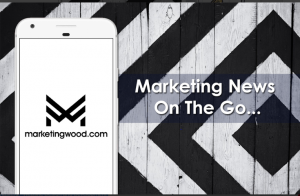 Simply put Programmatic advertising is a buying or selling process for ad inventory through real-time-bidding (RTB) sytem (auction models). Breaking down to how ad impressions are bought (CPM/ CPC basis) on available adslots through real time auction wins on the publisher sites/placements considering an ever evolving machine learning algorithm.
Simply put Programmatic advertising is a buying or selling process for ad inventory through real-time-bidding (RTB) sytem (auction models). Breaking down to how ad impressions are bought (CPM/ CPC basis) on available adslots through real time auction wins on the publisher sites/placements considering an ever evolving machine learning algorithm.
Programmatic media buying can be mostly categorised as one of these:
 Real Time Bidding (RTB) – Its an open -auction type bidding buy, server to server, propells advertisers to grab CPM (cost per mille / thousand) type impression deals using multiple ad exchanges softwares. A typical model where the ‘highest bidder’ wins, and is charged $0.01 higher than the close second which is again charged the same amount higher than the follower. RTB is still considered as a black box, decisions and bidding are done within fraction of seconds and less analysis is available for the reasoning to buy. However, this is popular due to machine learning and algo logics.
Real Time Bidding (RTB) – Its an open -auction type bidding buy, server to server, propells advertisers to grab CPM (cost per mille / thousand) type impression deals using multiple ad exchanges softwares. A typical model where the ‘highest bidder’ wins, and is charged $0.01 higher than the close second which is again charged the same amount higher than the follower. RTB is still considered as a black box, decisions and bidding are done within fraction of seconds and less analysis is available for the reasoning to buy. However, this is popular due to machine learning and algo logics.
Programmatic Direct/Guaranteed – An understanding for guaranteed impressions is done by an ad transaction or agreement directly between the publisher (seller) and the advertiser (buyer) through some kind programmatic ad buying system. There is no auction here, reserved slots allows advertisers to purchase a set amount of guaranteed impressions. Helps publishers in getting higher yield and control over the inventory sale, however there is no assurance of 100% inventory sell. This is the most popular media buy and have more than 50% of the share.
Private Marketplace (PMP) – Prenegotiated deals, limited access is how the private marketplace works where buyers and sellers qualify each other. Since there are no ad exchanges involved, a ‘deal ID’ is the key identifier for all such deals.
Programmatic is more close to targeting desired audience and is very successful tool as a Return on Investment (ROI) channel considering its track and measure capabilities.
Data Managment Platforms (DMP) enable publishers to deliver better on-site personalization and drive higher engagement resulting in increased conversions.
Data Managment Platforms (DMP):
They are the tech platforms which capture, categorize and store first party, second party and third party audience data (through cookies and signals) from sources such as online, devices and offline.
Popular Data Management Platforms (DMPs)
Oracle BlueKai: Data Management Platform BlueKai is the industry’s leading cloud-based big data platform that enables marketing organizations to personalize online, offline, and mobile marketing campaigns with richer and more-actionable information about targeted audiences, more info https://www.oracle.com/in/marketingcloud/products/data-management-platform/
Lotame DMP: Lotame’s real time data management platform (DMP) enables you to collect first-party data from any source — including websites, apps, social, email, CRM, search, campaign data, and beyond — for one holistic view of your consumers, so you can deliver more relevant content, products and services, at the right time. more info https://www.lotame.com/products/data-management-platform/
Adobe Audience Manager (AAM) and Adobe Analytics (AA)
AAM enhances the analytical capabilities offered through AA by allowing you to look at unique data sources and targeting platforms and send that information back into AA. The audience segments created with first-, second-, and third-party data in AAM feed seamlessly into AA. more info: https://theblog.adobe.com/use-adobe-audience-manager-aam-data-analytics/
Audience Studio /Salesforce DMP (Krux)
Formerly Salesforce DMP, Audience Studio can help you gain deep insights by unifying and capturing your data to strengthen customer relationships across every touchpoint with a powerful data management platform. more info: https://www.salesforce.com/in/products/marketing-cloud/data-management/
SAS Data Management Platform
Integrate, cleanse, migrate and improve data across platforms to produce consistent, accurate and reliable information with SAS Data Management software. more info: https://www.sas.com/en_us/software/data-management.html
Reaching out the industry professionals can help in better optimization of your budgets and achieve expected Return on Investment (ROI)

